Montessori vs Traditional School: Is One Better Than The Other?
My friends and family often ask me about the differences between Montessori vs traditional school. They commonly wonder, “Is Montessori better than traditional school?” or “Why choose Montessori?”
These questions reflect the curiosity many have about education options.
In this blog, I’ll address these questions and shed light on what sets Montessori education apart from traditional schooling.
Join us as we compare Montessori vs traditional school approaches and discover the unique benefits of Montessori education!
Montessori vs Traditional School: A Teacher’s Perspective
Navigating the choice of education for your child is a significant decision regardless of their age. As a teacher, I offer my perspective on this crucial choice.
I transitioned from fitness to pursue teaching when a childhood friend mentioned the Montessori elementary school where she taught Phys Ed. Her enthusiasm intrigued me, prompting me to attend an open house for prospective families at a local Montessori school.
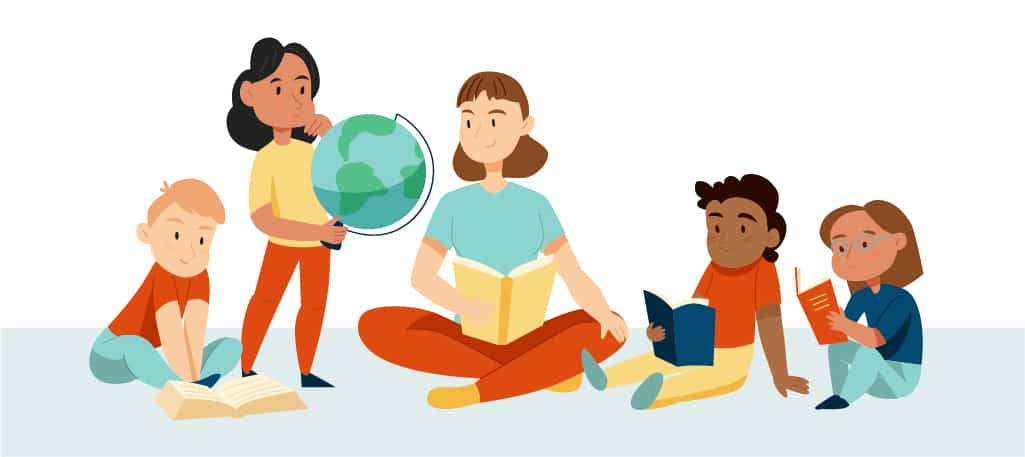
The classroom’s beauty, the engaged students of varied ages, and the bustling yet joyful atmosphere resonated deeply. It instantly clicked – I felt aligned and inspired to be part of this incredible environment.
If you want to get a sense of how I felt after visiting a Montessori elementary environment for just one morning, you should check out this video showcasing a parent’s perspective of Montessori education!
Insights from a Seasoned Montessori Educator
Almost twenty years ago, I completed my Montessori 6-12 teacher training course, and today I enjoy sharing my passion for Montessori at the elementary level with you.
Apart from being a Montessori elementary trained teacher, I’ve navigated the traditional education system myself and supported my step-daughter through traditional schooling, with a Montessori twist at home.
If you’re seeking an enthusiastic take on Montessori vs traditional school, you’ve found the right resource.
Montessori vs Traditional School: Which One Is Better?
There are significant ways in which Montessori schools differ from traditional schools, so naturally, we want to ask which one is better.
Well, spoiler alert. This question is really for you to answer.

Of course, as a biased Montessori elementary teacher and advocate of the Montessori method, if you’re asking me this question Montessori vs traditional school, the answer will almost always be a Montessori education is better.
But, I recognize that every student and family is unique, and a Montessori education may not always be the perfect fit for everyone.
Over the years as an upper elementary teacher at a Montessori school, I have supported many families in making schooling decisions for their children of various ages transitioning in and out of a Montessori environment.
Before formulating your own answer to the lingering question, Montessori vs public school, it’s crucial to break down these two branches of learning to understand them more clearly.
Prepare for enlightening insights in our exploration of Montessori vs traditional school.
💬 Discover our collection of Montessori quotes in these articles:
77 Montessori Quotes to Fuel Your Child’s Success Story Now
35 Montessori Quotes for Inspiring Peace
Montessori and Traditional School Explained
Let’s compare Montessori vs public school education. We’ll begin by exploring Montessori education in more detail.
Montessori School Explained
To begin, it’s important to understand the significance of Dr. Maria Montessori.
Montessori was an Italian physician, an educator, and an innovator. She used her background in science as well as her observation of young children to develop learning materials designed to provide hands-on experience that help students connect with what they are learning.
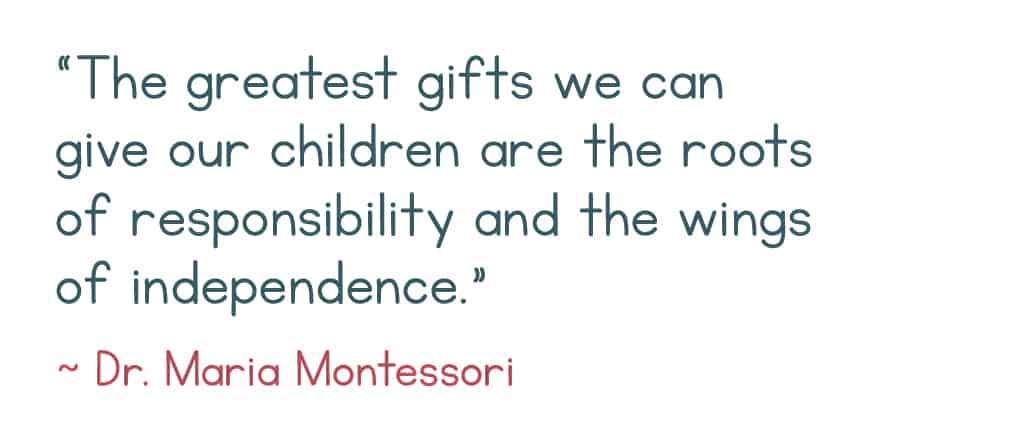
Through research and experience, she found that letting kids freely choose from an array of classroom activities helped foster their independence.
After studying children for years she developed the Montessori Method which is based on 5 main principles.
It’s important to know what these principles are in order to really understand the root of the Montessori Method.
The Five Montessori Principles
Principle 1: Respect for the Child
Montessori believed that every child deserved to be treated with respect. Not interrupting a student’s concentration and allowing them the freedom to make choices are great ways to show respect.
Principle 2: The Absorbent Mind
Montessori education is based on the principle that through their senses, children are constantly absorbing information. Their minds are open and ready for knowledge.
It’s important to know that children are listening and taking in what you put out. Want to learn more about the planes of development? Read this blog!
Principle 3: Sensitive Periods
According to Montessori, there are certain periods when children are more ready to take on new information. Known as sensitive periods, these phases last as long as it takes for the child to develop the skills.
Educators need to identify sensitive periods in their students and provide resources for children to flourish during this time.
Principle 4: The Prepared Environment
Montessori believed that children learn best in an environment that has been prepared to enable them to do things for themselves. This is known as child-centered learning.
This environment promotes freedom for children to explore materials of their choice.
Principle 5: Auto Education
Auto education, or what we call self-education, is the idea that children are capable of teaching themselves. Montessori teachers provide the environment, inspiration, guidance, and encouragement for children to take on learning for themselves.
Child-Centered Learning
Dr. Maria Montessori’s education system is based on child-centered instruction using specialized materials (specifically developed by Dr. Montessori) in a multi-age classroom setting.
At all age levels, independence is encouraged through self-directed activity, hands-on learning, and control of error.
The focus in the Montessori education system is on the whole child, how they learn, what they are inspired by, and preparing them for life outside of the classroom.
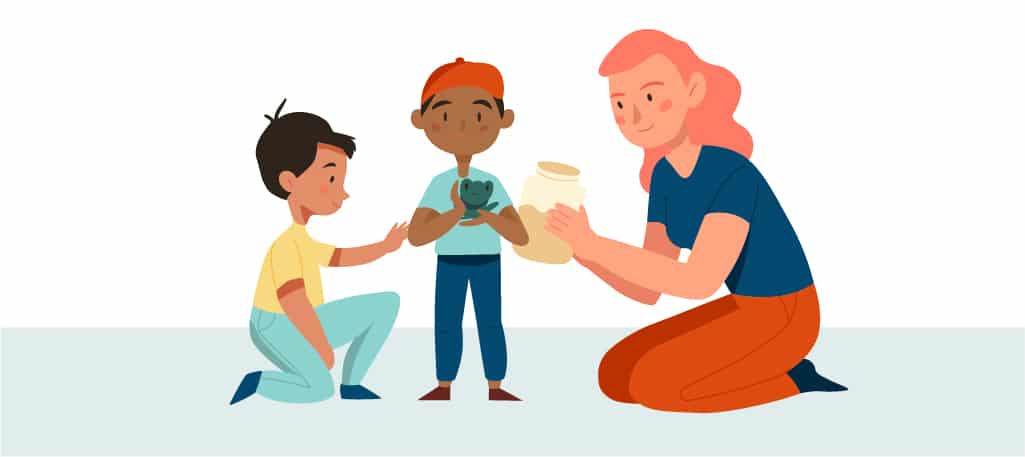
Consistency in Learning: Three Years in One Classroom
Something unique about a Montessori vs traditional school environment is that students remain in the same classroom for three years.
They (usually) have the same teacher for those three years as well as the same peer group. As a result, students feel comfortable, and safe, and are able to collaborate with children of varied ages naturally at their own pace.
Take lower elementary for example, which includes students aged 6 to 9. This is the equivalent of grades 1 to 3. A student starting grade one will have the same classroom, the same teacher (hopefully, but not always!), and most of the same classmates until they transition to upper elementary in grade four.
Upper elementary students range from 9 to 12 years of age or cover grades 4 to 6. After three years in upper elementary students move to middle school, where the Montessori model of education is much less apparent.
When students have the same controlled environment to work in with the same people for multiple years it creates a strong bond in the classroom. It’s almost more like a family and community connection.
Check out this wonderful video by the American Montessori Society that really highlights what a Montessori learning environment looks like and how it all works. You can really get a sense of the differences between Montessori vs traditional education here!
Hands-On Active Learning Experience
Rather than sitting still in the classroom absorbing lectures from the teacher, the Montessori student educates themselves under the guidance of their teacher and with the assistance of the materials.
Students are encouraged to explore and even touch – or we could say experience – what they are learning in the classroom.
Teachers introduce topics with lively and intriguing small group lessons. These lessons are meant to inspire students to continue studying the topic, to explore what they find interesting about it, and to really take a liking along with ownership of their learning.
Dr. Montessori believes (as do I!) that children want to learn. The Montessori curriculum encourages the child to discover why and how things work.
Students experience the joy of learning all while engaging in the process. As active learners at school, students become interested in learning about the world outside the walls of the classroom.
A love of learning emerges, and confidence blossoms.
As a Montessori teacher, I encourage my students to follow their interests and let them find answers to their questions. Or better yet, I answer their questions with more questions, and the hunt for knowledge continues.
As a result, students learn how to do things all on their own.
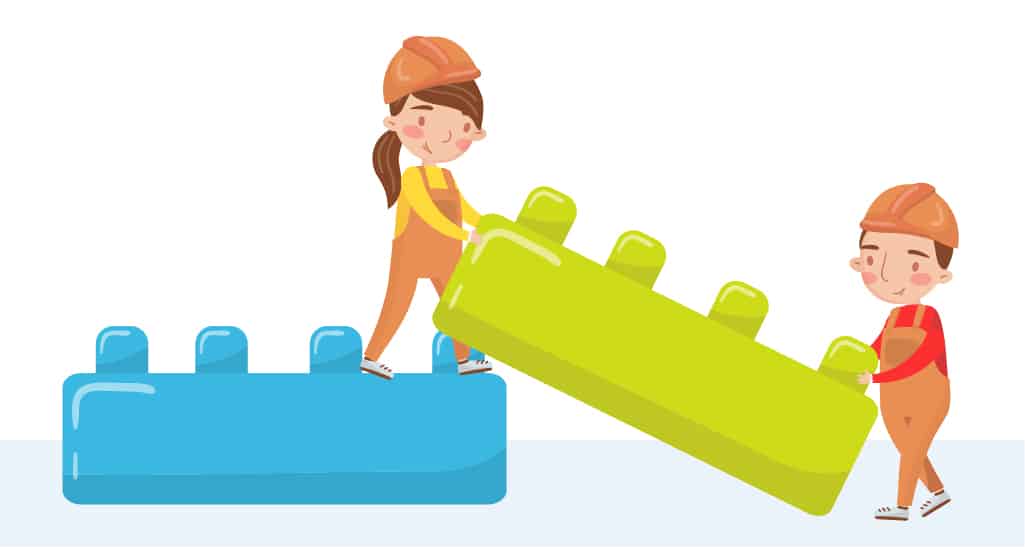
Encouraging Play-Based Learning
I motivate my students to learn through play because that’s what children naturally gravitate toward – they inherently want to engage in play as a means of learning.
That’s why unique vocabulary activities, rebus puzzles for kids, as well as fun math activities for elementary students can typically be found in a Montessori learning environment.
The Montessori classroom really is a thing of beauty!
Montessori Education: A Success Story Across All Age Levels
Parents are often drawn to the Montessori method for the primary level of learning, also known as the Casa level, which spans the age range of three to six.
Then once grade one comes along for that six-year-old, many families question continuing with the Montessori school system for the elementary years.
It’s important to understand that a properly run Montessori elementary program has the ability to unlock wonderful opportunities for the child in the second phase of the Montessori planes of development to explore their interests and experience deeper connections with their learning.
I’ve witnessed some incredible growth and shift in independence in the Montessori elementary classroom.
At all levels of Montessori education, students learn how to problem solve and become independent learners.
Common Misconceptions about Montessori
Children are walking around aimlessly.
There is a common misconception that children in the Montessori classroom, especially at the elementary level, are just roaming around the classroom all day doing whatever they ‘want’.
While it may look like that from the outside looking in, this isn’t completely true.
It is important to note that Montessori students are encouraged to make their own choices and engage independently on what they want to work on, but that learning is carefully guided by the classroom teacher and material.
Montessori students are still practicing their long division skills, they are still writing essays, and they are still creating projects like in traditional school.
A big difference between Montessori vs traditional school is that Montessori students get to decide what exactly they’re going to focus their learning on depending on what has been presented to them by the teacher.
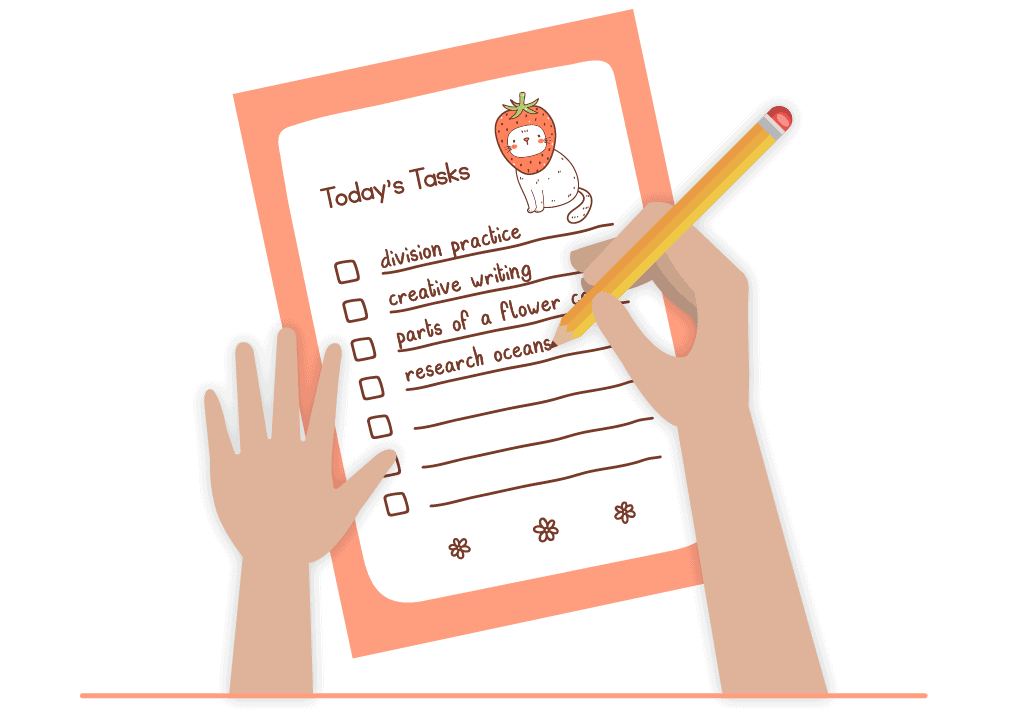
Students don’t do homework.
In terms of homework in a Montessori classroom, well, it’s kept to a minimum if any at all. This is because children spend all day in the confines of a classroom learning.
The Montessori method suggests that a student’s time before and after school should be used to be with family and friends, practice their personal interests, and relax.
I rarely assign homework to my upper elementary students, but interestingly enough they are often seen taking work home.
Whether to get ahead on a task, meet a looming deadline, proudly share their work with their parents, or just to practice a skill students took it upon themselves to continue to study at home. This means they’re likely to enjoy what it is they are working on, and are learning to be even more self-motivated.
Traditional School Explained
The traditional school system has been around for a very long time and is what most educators and parents are familiar with. It’s the type of education we and most of the people we know experienced.
In this education structure, classrooms are divided into grades, each filled with students of the same age. All students follow the same curriculum at the same time and at the same speed.
They are taught the same lessons regardless of each child’s natural speed of development, or style of learning. This can lead to a keep up or fall behind environment.
Teacher-Centered Learning
Traditional education has the teacher front and center. As keepers of knowledge, teachers pass information on to their students. And hopefully, they’re listening and actually understanding!
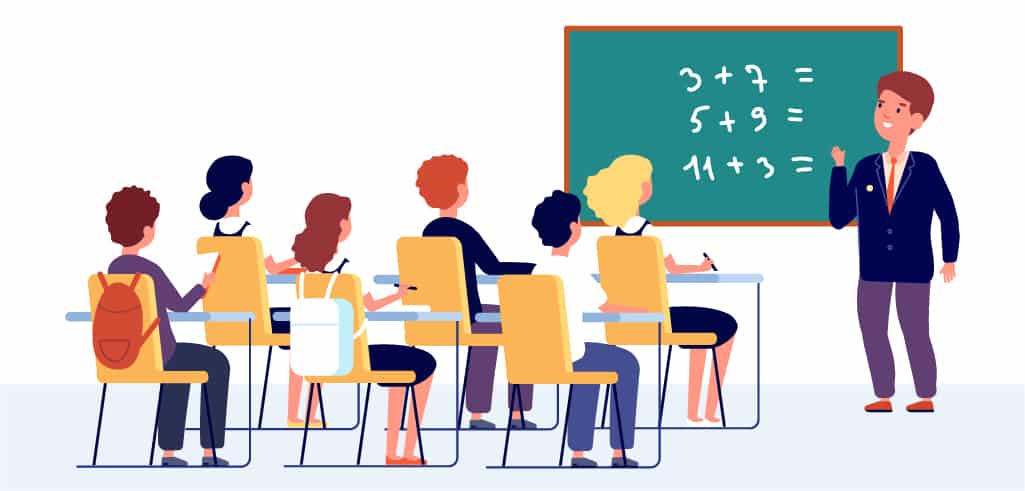
A teacher prepares and presents a particular lesson to the class as a whole. The expectation is that the students will learn something because they were spoken to about it.
With no standardized materials to connect students to their learning, information is generally experienced by listening to a teacher and looking at a chalkboard or textbook.
Tests and Quizzes for Assessing Student Progress
In this stream of education, from a young age, there is a presence of quizzes and tests in the classroom, along with informal assessments and project work.
Furthermore, homework assignments are a regular part of the traditional schooling learning experience. These are all ways in which students’ progress can be evaluated and marked.
It’s through traditional education that the majority of learners receive their primary and secondary education. It is what has shaped many students into individuals who contribute to the working world as they become adults.
Montessori vs Traditional School: Which is Better?
While the approaches are quite different, students in a Montessori learning environment and students in traditional schools do work towards common academic milestones and life goals. Though how they get there and how far they press on forward can vary greatly, it should be noted that they can both be effective learning environments.

In order to answer this question accurately, it’s essential to look at some key differences between Montessori vs traditional public school.
Finding the best school fit for your child at any age involves understanding the differences that exist out there, so you can choose the one that best fits your child. Here we outline some of the significant differences between Montessori vs traditional education.
Be sure to bookmark this blog post and give it a read before choosing a school for your child. You know what they say, knowledge is power!
The Difference Between Montessori And Traditional School
To better understand the difference between Montessori and traditional education, let’s compare the two in four important ways:
1. Approach to Learning
This involves how information is delivered to students as well as the skills and behaviors used by learners to engage.
2. Structure
Looks at what the classroom focus is, how work flows in the classroom, and how the school day is broken down.
3. Age Grouping
The age range of the students within a classroom learning environment.
4. Control of Error
How students receive feedback on their work and correct errors.
1. Approach to Learning
The Approach to Learning in a Montessori School Setting
A Montessori classroom is an experience for the senses. At all age levels, you’ll find specialized learning materials available and at arm’s reach to students in beautifully prepared environments.
With these materials, students actually grasp – or feel, or see – what they are learning. They are physically and mentally involved in the process.
Here’s an example of the Peg Board, a great Montessori math material used to practice many topics such as multiplication, factoring, and square roots. Manipulating the material allows students to form a connection between their hands and brain, which in turn sharpens their intellect. Their mathematical minds are developing!
In addition, Montessori education provides opportunities to show students how everything and everyone is interconnected. Lessons are taught with subjects crossing over allowing typically isolated topics to exist together, as they do in life.
Here’s a great example of cross-curricular learning in a Montessori classroom.
When I was asked to teach a Botany lesson to a small group of lower elementary students I jumped at the opportunity. They were studying root structures which included learning new and complex vocabulary that described different types of roots.
This made it easy to tie literacy into a dynamic, hands-on science lesson. Combining the study of plants with a word study brought Culture and Language together in a natural way.
The young students examined adventitious roots while looking at complex diagrams and even live samples, all while discussing the part of speech and etymology of this new word. We literally studied the roots of a word that is a type of root. That’s so Montessori!
Move at the Child’s Pace
Students in a Montessori classroom move through lessons and topics at their own pace with the goal of accumulating useful knowledge and life skills. Through practice with materials and following classroom guidelines, children at all grade levels become active learners in a Montessori classroom.
Their natural curiosity is heightened because they are able to investigate firsthand what they are learning. They are engaged and interested in as well as responsible for their own learning.
This is due to the fact that they are encouraged to really understand what it is they are learning, and not just tasked with memorizing information.
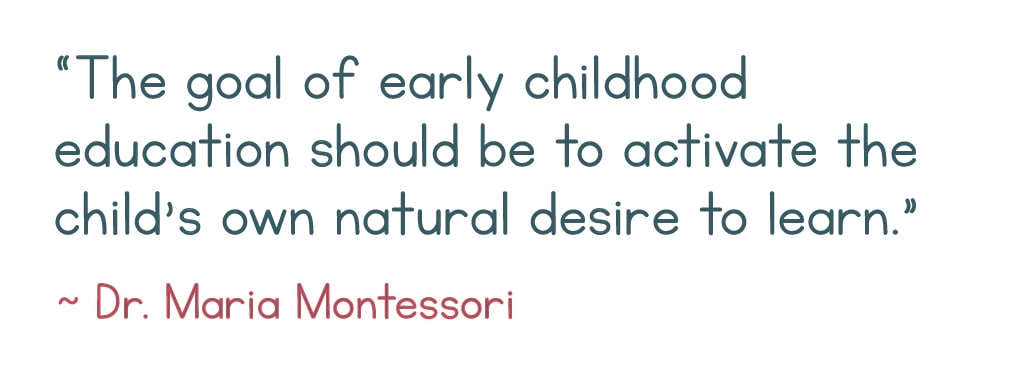
Preparing Children for Life
Instead of top marks and test scores, the end goal in a Montessori classroom is discovery, understanding, and the ability to apply what they have learned to real-life situations. Montessori is essentially preparing children for life beyond the classroom.
While some may think there are no rewards in a Montessori classroom, the greatest reward of all – pride – is prevalent in this environment. Students develop a sense of pride after completing their work. They are self-motivated to learn.
The Approach to Learning in a Regular School Setting
Aimed heavily toward auditory and visual learners, the focus is on learning new information through repetition and memorization.
Information is transferred from teachers to students, and it’s expected that all children learn this way, or they may fall behind. While teacher-directed learning is effective for some, I find that it can dim the light of a bright student who learns differently.
Rewards and consequences are commonly used in traditional schools to motivate students to complete tasks. This works well with some students but has the potential to create dependency in or even discourage others.
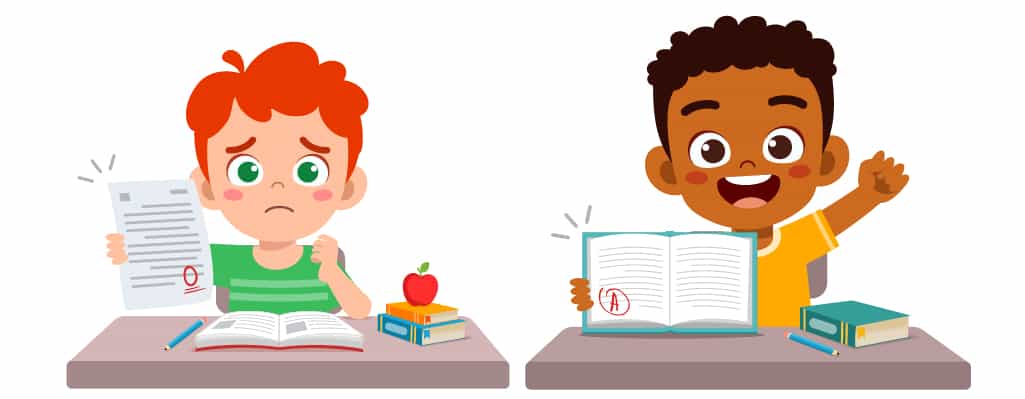
Through studying textbooks and listening to instructions students study each subject individually in small chunks of time throughout the day. There is little connection or cross-over made between these subjects, leaving little time to really explore and understand any new concepts.
Lessons are typically taught in a silo style, meaning there is a focus on one topic and one topic only. This limits authentic, real-world connections since all subjects in life are intertwined.
At all grade levels, students are taught the same curriculum at the same time with the goal of high test scores and good grades.
2. Structure in the Classroom
Structure in a Montessori School Setting
At all age levels, there is a focus on hands-on, independent learning. Each student is an individual and has their own needs.
While daily lessons are given in small groups by a teacher, students also have the opportunity to investigate topics further outside of lessons by choosing what they want to work on, based on what interests or inspires them.
There are still tasks and assignments to be completed, but how they approach them, what they focus the work on, and how they represent their work is up to them.
Freedom with Responsibility
Students in my upper elementary classroom had the freedom to decide when in the school day they would work on what subjects and assignments. Talk about a great teachable moment on time management, as they learn how long it takes to do certain tasks. Helpful skills and one’s I wish I had before going off into the real world!
That’s right. A key difference between Montessori vs traditional school is that Montessori students are free to follow their interests, to expand their learning.
This sometimes comes as a surprise to parents as they wonder how students can choose appropriate tasks to work on all day long at school. How will they get anything done?

But studies have revealed that when learners are given the chance to tap into their inquisitiveness and dive deeper into their interests, they are more likely to learn different skills and concepts as they explore. When we follow the child they learn organically.
3-Hour Work Cycles
In order to explore though, students need time. In a Montessori environment, the school day is broken down into 3-hour blocks of work time to allow for all of that exploration.
Dr. Maria Montessori observed that a long, uninterrupted work cycle provides students with time to practice their skills and pick up new ones. They are able to focus and hold attention to complete one large task or take the time they need to complete several small ones in this time frame.
Within the 3-hour work cycle, students work at tables and on the floor with the freedom to move around throughout their period of work. Having the ability to choose to work somewhere comfortable gives students a sense of freedom and control over their method of working.
This helps them understand themselves better, and in many cases improves focus as well as confidence because they made these choices for themselves.
This is really beneficial for the type of student who can’t sit still for long periods of time, as they can move about and expend some energy without having to ask permission or wait until it’s allowed. They have the autonomy to decide for themselves what they need to do to get their work done, including if they need a break to use the washroom.
Collaborating with Classmates
Small group work and collaboration with others are an important part of this learning environment. At every grade level, Montessori students are encouraged to be social beings.
Students interact with their schoolmates, rather than solely focus on themselves. This development of social skills and exposure to peers of different ages and experiences fosters acceptance and inclusion.
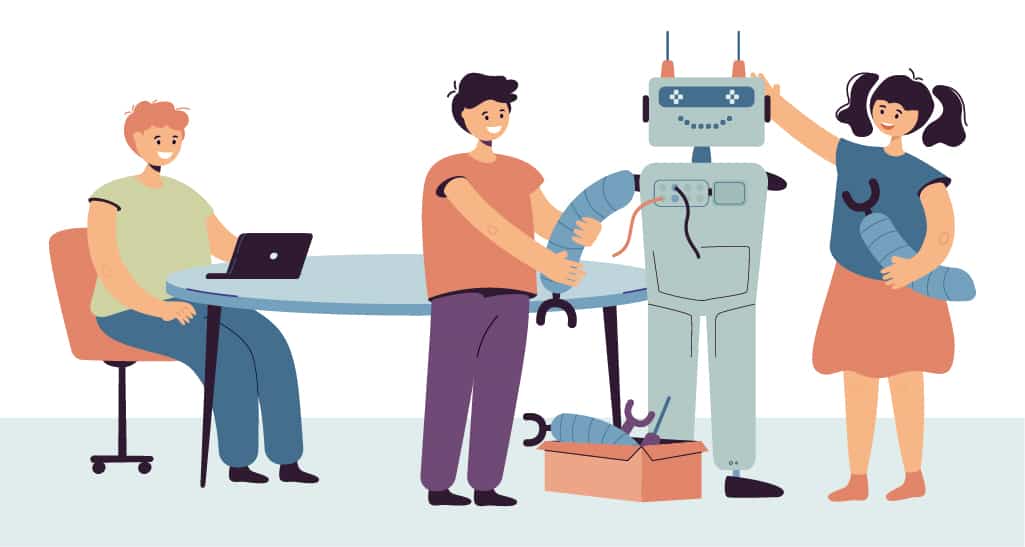
The Montessori Teacher is a Guide
The Montessori classroom is set up to run itself as students make their own choices about what they will work on, with the gentle guidance of their teacher and the classroom expectations in mind of course.
And while independence is formulating, students always know they can approach the teacher to ask for help or even to show what they’re working on.
The Montessori teacher should blend into the environment and act as a guide. If I had a quarter for every time the administration thought I’d left my classroom teacherless because I was down on the floor engaging with students, camouflaged into the wild world of elementary, I’d be one wealthy woman!
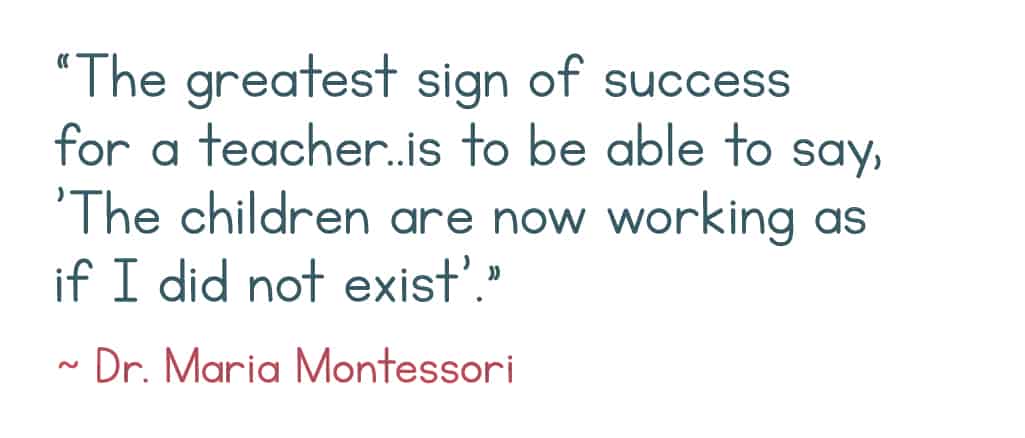
This might be the biggest bonus of being a Montessori vs traditional school teacher. I enjoy being part of the learning from their level, being invited to hear what they’re working on because they’re so excited to tell me. Knowing that they know and feel that I am approachable and that I care about their work is key.
When blended into the environment, I have an opportunity to observe my students working on their tasks independently, at their own speeds, and I can guide them when they feel they need it.
Students feel safe and supported to explore and try new things when they know their teacher is there to guide them.
While it sounds like the structure of a Montessori environment is to have no structure, it’s important to note that at every level there is a robust and engaging curriculum that is followed.
It is the delivery of information and the timing of the delivery that is different because well, all students are different. In a Montessori classroom, students meet academic expectations for their grade level, they just do it on their own time and in their own way.
Structure in a Regular School Setting
It’s a group mentality when it comes to instruction here. All students are learning the same things at the same time. There is one standardized curriculum that the teacher presents to all students regardless of where each individual stands academically, or how they learn.
The Day Is Divided
The school day is broken down and scheduled into smaller time slots allocated for the study of different subjects. Generally, subjects are studied independently of each other with little or no cross-curricular connections being made.
For example, students might study Math for fifty to eighty minutes in the morning and then move on to the next subject right away. This makes it difficult for some students as there is little time to process and practice what they learned.
Maybe that’s why there’s a need to take home homework home in traditional school!
Teacher Led Environment
Lessons are teacher-driven. They instruct the entire class together, moving every student forward at the same pace.
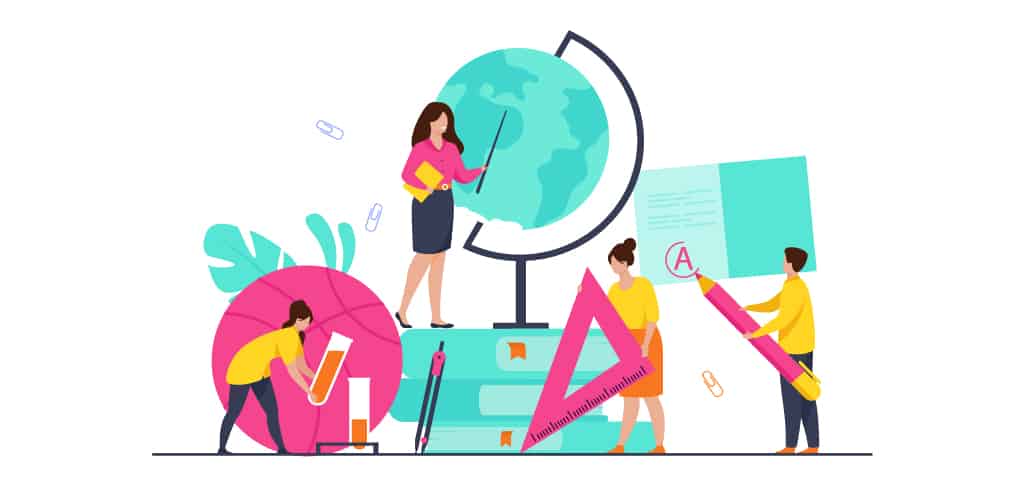
In traditional schools, students spend most of their time seated at desks, often with assigned seating determined by the teacher, who remains at the front of the class, commanding the students’ attention.
Movement is limited during class time and permission is often needed to go anywhere. The mentality is usually that the teacher is the boss of the classroom and not a guide in education.
3. Age Grouping
Age Grouping in a Montessori School Setting
A Montessori classroom offers three-year age groupings. These mixed-aged classrooms exist throughout the different levels of a Montessori school.
Let’s break it down: The casa, or primary level, caters to children aged three to six, while lower elementary serves ages six to eight, and upper elementary accommodates children aged nine to twelve.
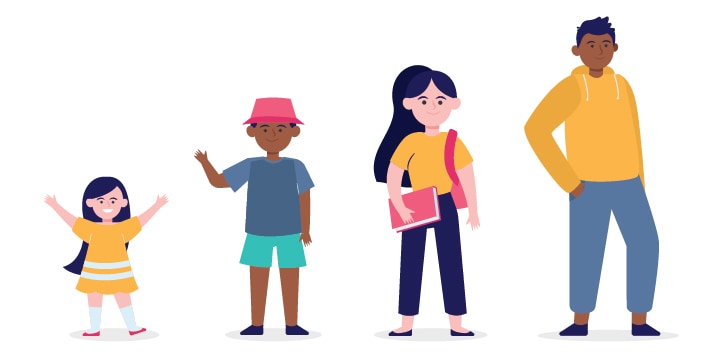
Older Students Mentor Younger Students
Multi-age classrooms provide regular opportunities for learning and growth. Young students benefit from observing, being encouraged by, and sometimes even working on a project in tandem with the older students in their class.
Also, older children are sometimes called on to teach the younger children a small lesson. Being able to do so proves that they have truly digested and retained the information for themselves. It also gives them something to be proud of, and instills working as a team, and being a leader.
For example, I always enjoy having upper elementary students volunteer to help with the presentations of the Montessori great lessons. The older students take pride in their role as assistants and are excited to share their knowledge with their younger audience.
Students Have the Same Teacher for 3 Years
A beneficial result of the three-year age grouping is that students typically have the same teacher(s) and classroom for the three years of each academic level.
This in itself is such a gift. Three school years is a long time to spend with someone and allows a teacher to really get to know, connect with, and guide a student in a way that really suits them.
Students grow comfortable in their learning environment and are able to connect more deeply with their teachers and peers over the span of their three years in the same classroom.
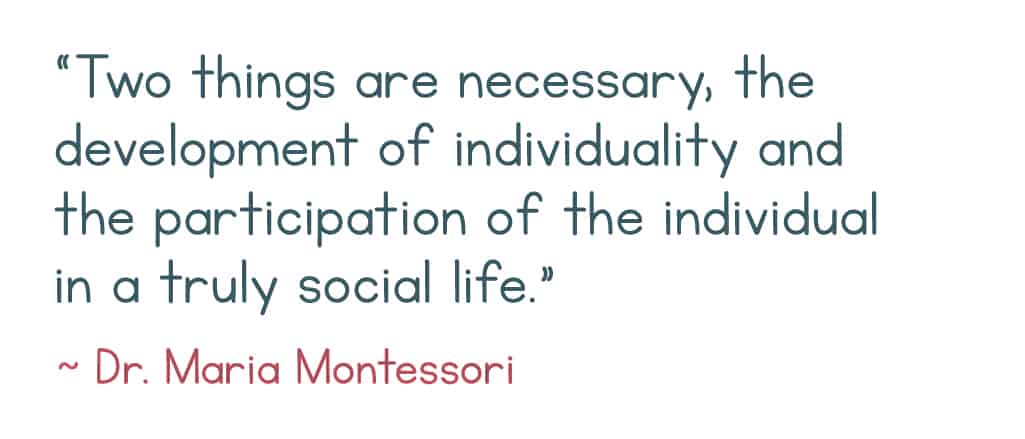
Age Grouping in a Regular School Setting
Traditional schools offer learning environments that include peers of the same birth year.
No Mixing of Age Groups
This homogenous grouping keeps children of the same age learning together, limiting their interactions with other students that they might otherwise be friends with and even look up to.
I think the older students miss out on the opportunity to teach and be kind, patient, and confident leaders. Not sure how to word this!
Rooted in History
Most schools use age-based grade levels because of their historical legacy. Classes containing students of the same age were thought to be the most efficient way to transmit age-appropriate knowledge to learners.
While students are matched by age in traditional school, they are also sometimes additionally grouped by ability. This might alienate some students and limit their social collaborations.
4. Control of Error
Not familiar with the term ‘control of error’? Or maybe you’ve heard of it but aren’t quite clear on what it is. It’s all good, we’re here to fill in those blanks. So before moving forward with #4 on this list, let’s look at the meaning of control of error.
Control of error is a built-in quality that exists in many Montessori materials and allows a child to check their own work. This means that they can complete tasks without the help of a teacher or a peer.
Control of error provides learners with instant feedback and propels them toward completing their work independently.
Control of Error in a Montessori School Setting
At all levels of learning, Montessori students are provided with tools and opportunities to self-correct their work. Almost every lesson has a built-in way for the student to self-check their work to see if they performed the task correctly.
Here is an example of one of our Distributive Law command cards (flashcards, task cards). The question is written clearly on the front and the answer is available on the back.

Control of Error Provides Students with Instant Feedback
This control of error means that when a child makes a mistake, they are typically able to spot their own error through instantaneous feedback from the classroom materials. With the use of self-correcting materials, students become independent and confident learners.
You can look at control of error as one form of assessing student learning. Without formal testing or homework, teachers observe students’ progress through the work they complete independently.
Students Learn to Learn From Mistakes
Using materials that include control of error gives students the opportunity to make a mistake, but also the time to find the mistake in their process without feeling bad or losing marks for making the mistake.
They actually feel good about figuring out where they went wrong, fixing their mistakes, and getting it right!
Sure, some students are pulled to just look at the control of error before attempting to solve a task independently, but you would be surprised to know that for the most part, students want to perform.
Students want to test what they know. And the classroom materials allow them the opportunity to do so, on their own time, at their own speed, and even with the guidance of their peers or their teacher.
Control of Error in a Regular School Setting
Students do not have access to specialized materials that provide control of error. For the most part, learners are dependent on their teacher for correcting their work and helping them find answers to problems.
Tests, assignments, and homework are used here as a way for teachers to see, and students to show, how much a child has learned and what they understand. Student mistakes are highlighted and graded.
This can leave some students feeling unintelligent and judged.

Often times there is no time to learn where they went wrong or to try again and see if they can revisit where they went wrong and truly learn from their mistakes.
Of course, each classroom setting along with each teacher’s style is different, so this may not be the case in every classroom. However, it is how the system is set up and generally followed.
Benefits Of Montessori Education
I strongly believe in the Montessori method and its advantages over traditional education. To me, the benefits of Montessori vs traditional school are clear and compelling.
Here’s a list of a few of the benefits that Montessori education is known for:
✅ Emphasis on Hands-On Learning
Dr. Maria Montessori noted the importance of connecting the hand and the brain. She stated that they should develop together in harmony.
For this reason, the Montessori curriculum at all levels includes intriguing materials that allow students to tangibly connect to what they are learning. Essentially learners are manipulating concrete materials to understand abstract concepts.
For example, when learning long division students use the racks and tubes material. This elementary math material lets students explore with their hands what division looks like by physically handling interesting little pieces.
This material connects the hand and the brain to the process of dividing large numbers.
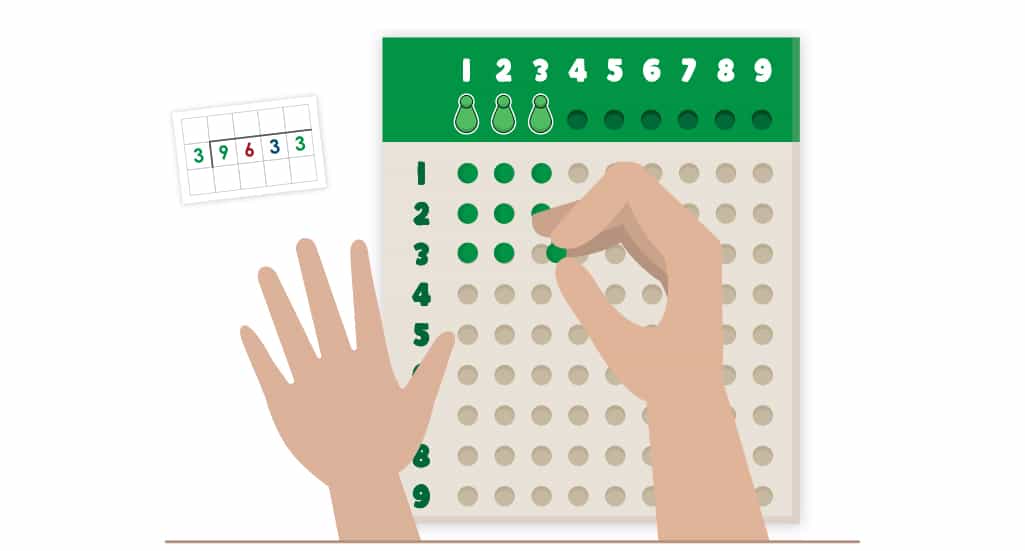
We all know that kids always want to touch things. So when encouraged to touch and manipulate the materials around them, students show more interest in learning.
The availability of beautiful learning materials, such as the racks and tubes division material, in an organized Montessori environment, makes doing work appealing and enjoyable to students. It allows students to really enjoy and therefore connect with what they’re learning.
Rather than looking at lessons written on a chalkboard or tasks within a workbook, Montessori students get to actually grasp what they are learning.
✅ Expanding Social Interactions
I love interacting with Montessori students. No matter the age, they always have something intriguing to say and they usually deliver it in an awkward way.
But the bottom line here is that there is delivery. These social beings have something to say and the Montessori classroom is a safe place to do it!
Mimicking the real world within the classroom, Montessori students are encouraged to interact with peers that are outside of their age range on a daily basis. The Montessori child expands their social interactions through the sense of community built in a multi-age classroom.

Students learn from their classmates. Older students teach younger students and model appropriate behavior.
I really enjoy watching older students take pride in their leadership roles, and their ability to share their knowledge. Younger students strive to be like the older students and emulate their habits.
In the Montessori vs traditional school comparison, interacting socially stands out as a challenge for many individuals. However, Montessori students, spanning various age groups, tend to navigate social situations adeptly, both within and outside the classroom.
This capability is often attributed to the mixed-age groupings inherent in the Montessori environment.
✅ Embracing a Love of Learning
Children are inherently curious beings. From infants to high school students, they like to absorb information. One of the things I love most about the Montessori environment is that a student’s desire to learn is nurtured and encouraged.
At all levels, Montessori education offers students the opportunity to choose their own work and explore topics of interest.
This might sound like Montessori students are free to do whatever they want all day long. No wonder they grow a love of learning! But it’s not like that, well, not exactly.
Montessori students are encouraged from a young age to choose their focus of learning each day. However, their decision is limited by the materials and activities – in different subject areas – that their teacher has introduced them to.
Students follow up on the lessons that their teachers have presented by exploring the topic further. It is here where they expand upon what they know in ways that intrigue them and fall in love with learning.
A lesson on Medieval Times to a small group of elementary students can lead to some students grouping together to explore the food of that time period and cooking a glorious feast for the class to indulge in, while others may independently research the armour used back then and create replicas out of cardboard.
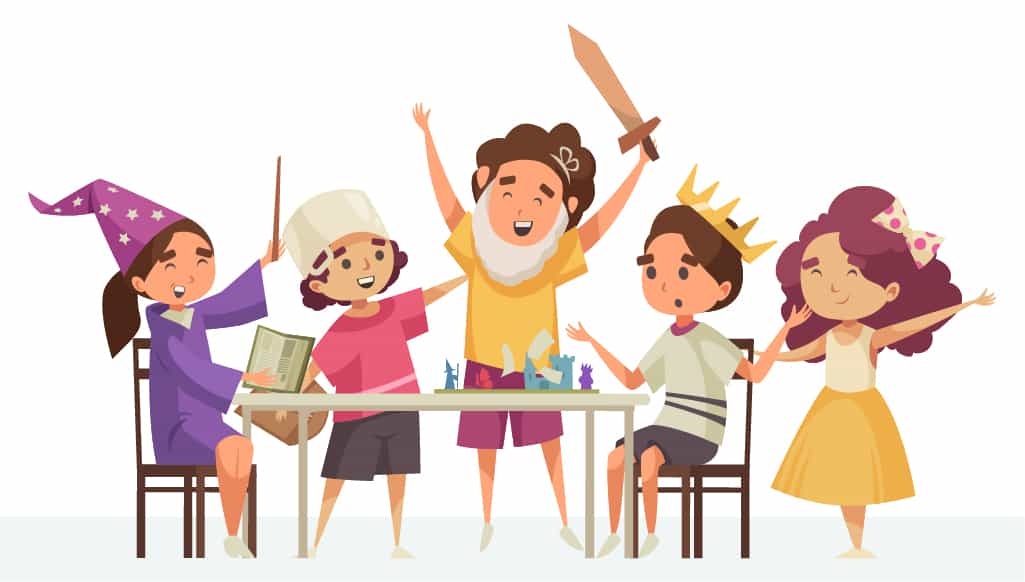
Two different takes on the topic, but both provide a great accumulation of knowledge done in a pleasurable way.
By following their interests they develop into active learners. Students build trust with, engage in, and even like the process of learning. When learning is enjoyable it becomes a lifelong endeavor.
Montessori education, at all levels, provides learners the chance to fall in love with the journey of learning.
✅ Encouraging Independent Learning
The Montessori philosophy focuses on self-directed learning where students take charge of their learning and are motivated to expand their knowledge.
This leads to independent learners. Montessori students are comfortable and capable of working on their own. Something all teachers are looking for, right?
In the Montessori vs traditional school context, children in Montessori learning environments are taught from a young age to complete tasks independently. This independence is fostered by the concept of control of error, wherein specialized classroom materials provide built-in answers, allowing students to receive immediate feedback as they work.

Because this methodology doesn’t use tests or grades, students are encouraged to try things that they may not succeed at understanding right away.
The idea that mistakes are a part of the learning process is understood. Students learn to recover from mistakes and even learn from them. Their independence is nurtured, as is their confidence to try new things even if they might fail the first time.
Students who learn to work on their own are able to manage themselves and think and get tasks done independently. With this type of learning students are able to expand their knowledge base at their own pace independently. Great traits to have at such a young age, and something they’ll use all through life.
✅ Enabling Freedom with Responsibility
While it is true that Montessori students, at every grade level, choose what they want to work on, there are classroom expectations, guidelines, and of course curriculum that must be adhered to.
There are responsibilities that come with the freedom of choice, a life lesson that Montessori children learn early in life.
Students are able to explore their own interests but like all good things, in moderation. They are responsible for studying other topics as well.
Work from subject areas where lessons have been presented by teachers must be covered. When that work is complete, personal areas of interest may be further explored.

In order to complete all tasks, Montessori students at all levels develop admirable time management skills. They are taught how to organize their time to complete pieces of work in all subject areas. A skill I wish I was taught in elementary school!
In addition to choices on what to work on, Montessori students often have the choice to work independently or with their peers in small groups. Being able to make these decisions gives students a stronger connection and a sense of ownership of their work.
While the choices vary from age and grade level, one thing remains the same – the freedom to make choices empowers Montessori learners and teaches them to take initiative in their own learning.
Disadvantages Of Montessori Schools
Before you finalize your stance in the Montessori vs traditional school debate, it’s essential to recognize that while the Montessori method offers numerous benefits, it also has its drawbacks.
❌ Montessori school can be expensive!
Beautiful and specialized materials, as well as highly-trained teachers, come at a hefty cost making Montessori programs expensive to start and maintain.
As a result, these schools are often seen as uppity and only for the wealthy because of the steep tuition often tacked on to attending a Montessori school.
While these may be deterrents, it’s worth stating that some schools offer bursaries or scholarships and even financial aid for families that qualify. Ask around while doing your research. You’d be surprised what happens when you just inquire! There are some areas where Montessori schools are even free.
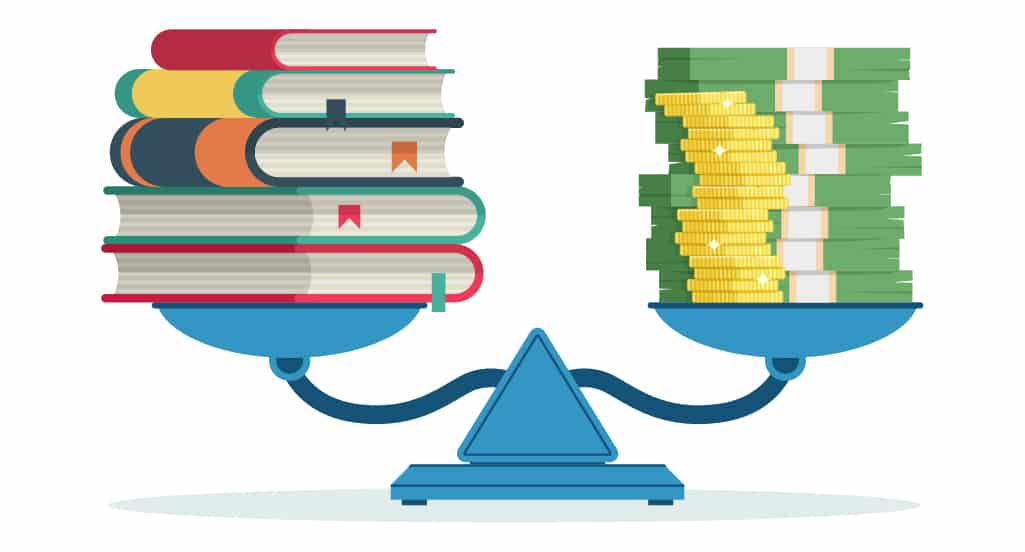
❌ Not all Montessori schools are created equally.
There are currently no specific guidelines that must be met to use the name Montessori. In fact, any school can add the term “Montessori” to its title because it is not legally protected. Crazy, right!?!
And this is where things get tricky my friends. Some schools that label themselves as Montessori follow the philosophy strictly while others run a loose version of it or more so borrow from the philosophy rather than follow it.
How do you know a Montessori school is legit?
If you’re looking for the real deal, look for schools that adhere to the authentic Montessori principles of multi-year age grouping, and using materials in the classroom is a good place to start.
When researching schools in your area, search for accredited Montessori schools. You can find schools that are accredited in Canada with the CCMA here or in the United States with AMI here.
Otherwise, check out some of the Montessori or other alternative educational programs in your neighborhood, really what matters is that the environment fits your child’s needs.
❌ Montessori education is not for every child.
While it works for most children, Montessori school does not initially or automatically work for all learners. And that’s ok. But be sure to give it a fair shot before giving up.
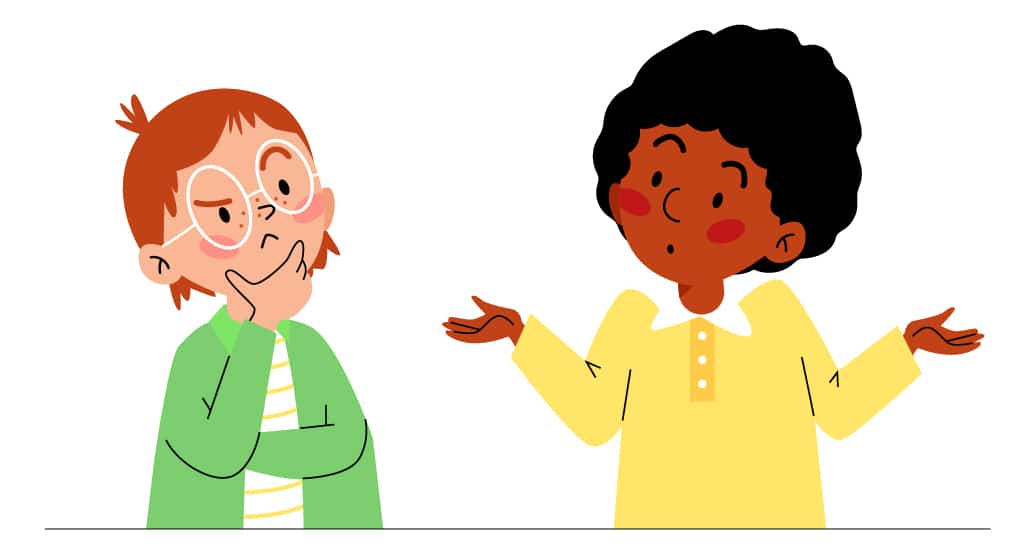
Students who are always waiting for adult direction may have some difficulty when starting in a Montessori environment. The same goes for learners who have difficulty choosing or staying engaged in activities. They might struggle in a Montessori environment at first.
But with time and support, Montessori students learn to trust themselves, they learn from their peers, and they are able to progress at their own pace.
A safe space for students to find out what works for them, the Montessori classroom can be for every child. It’s an accepting place where differences are celebrated.
❌ Not all communities have a Montessori program.
If you’re living in the middle of Carrot River, Saskatchewan in Canada, and looking for a Montessori program for your toddler you may not find one, or maybe you will.
The point being is that Montessori schools are not as common as traditional schools.
It might be hard to find a good Montessori program in some communities. Small, rural areas or new developments may not offer the education system you are looking for.

If this is holding you back from enrolling your child in a Montessori program, think about connecting with families in your area to learn about small group homeschool options. There might be a pod of learners in your area that your child can work with.
Better yet, why not start a Montessori school yourself?!? It only takes a handful of students to get a classroom going and there are always families looking for alternative streams of education.
❌ Montessori students have trouble transitioning to regular school.
It’s true, some students will have a hard time adjusting to a regular school environment after they have been in a Montessori program for several years. But it is also true that Montessori students are adaptable and resilient.
Faced with more structure and rules and less hands-on experiences in traditional school, students leaving a Montessori environment are experiencing a lot of change. But don’t worry, they’re probably better prepared for it than you are!

The skills that learners pick up in a Montessori environment serve them well in all areas of life, including new schools. For example, in addition to the core academic subjects, Montessori students also learn about respect, self-discipline, and positive decision-making.
The Montessori child is a resilient being ready for all that the world has to offer, even if that’s just a transition to traditional school.
Do Montessori Students Do Better In School?
To be honest, there isn’t a lot of research out there that proves Montessori students do better in school than students in traditional schools. Maybe in the future, we will see scientific studies that explore this in greater detail. But for now, all we have to share is personal experience.
From my time in the classroom, and even with my online Montessori students, I know that Montessori students are adaptable. They are open to different ways of learning.
These inquisitive learners are willing to try new things and step outside of their comfort zone. Montessori students are social beings that are on a quest for knowledge.
Montessori Graduates Are Independent and Confident
Students who attend Montessori school at some point in their life usually come out the other end as independent learners who tend to be more organized, want to contribute positively to society, and have a palatable love of learning. They like to ask questions and are genuinely motivated to find the answers.
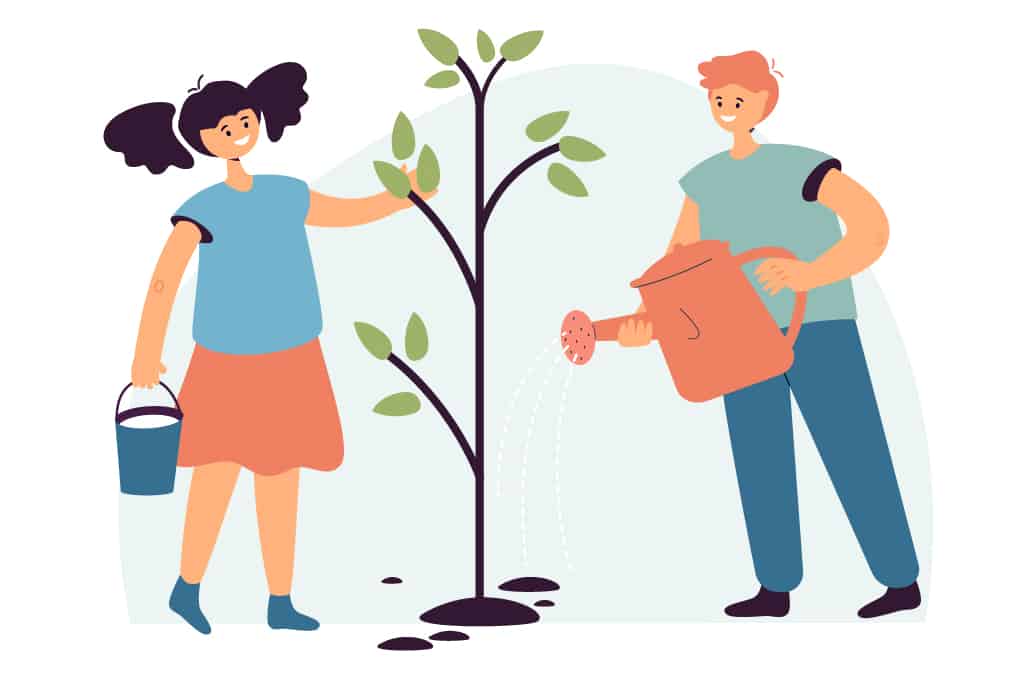
Running into former students out in the real world is always a delight. I’m always impressed yet not surprised at how they have turn out.
Motivated, respectful, kind, thoughtful – I could go on with the positive attributes but you get the idea. I’m happy to report that Montessori students do really well in the real world.
While there is no guarantee that enrolling your child in a Montessori program will lead to them doing better in school, it is safe to say that a Montessori education will better prepare your child for life. They are more likely to develop into independent and self-motivated students ready for what the world has to offer.
🧑🎨 Fuel your child’s creativity with our activity book!
Our activity book Draw, Doodle, Scribble, Think, Create is the perfect creative outlet for the elementary child looking to explore and expand through all sorts of hands-on experiences, artistic ones included.
Read more about why your kids need this activity book with unique drawing prompts.
The Wrap-Up: Montessori vs Traditional School
When it comes to choosing a school for your child there is no one size fits all answer that works for every student at every level of learning. But with a stronger understanding of Montessori school vs traditional school, you are now better equipped to make that choice.
Wait! Before making a decision, do some local, personalized research. See what schooling is out there in your area and available to your family. Make a conscious effort to take all streams of education into consideration, even if some may stray from the norm.
After researching, get out and visit schools. Understand their values and see them in action. Ask other parents or even the teachers at the school for some insight. You want to find a learning environment that aligns with your family, but most importantly your child.

You can also take your research online. Google is always a great place to start when searching for schools. Are there any reviews on Google? Do they have any videos of their classrooms in action? Are they on YouTube or Instagram? Get online and find out more!
So back to that burning question, Montessori school vs traditional school – which one is better? Well, it really depends on the child. Isn’t that answer so Montessori?
You Got This!
We hope that this information will guide you to make the best decision. The right school for your child is out there!
Keep your kids busy learning with the activities in these blogs:
11 Ways to Use Our Roll A Story Dice Game
13 Engaging Vocabulary Development Activities for Elementary Kids
Rebus Puzzles for Kids: A Comprehensive Riddle-Solving Guide
31 Fun Summer Reading Activities Elementary Students Will Love
The Best Neighborhood Walk Scavenger Hunt & 13 Different Ways to Use It
8 Easy Rebus Puzzles with Answers
27 Educational YouTube Channels to Prevent Summer Learning Loss


